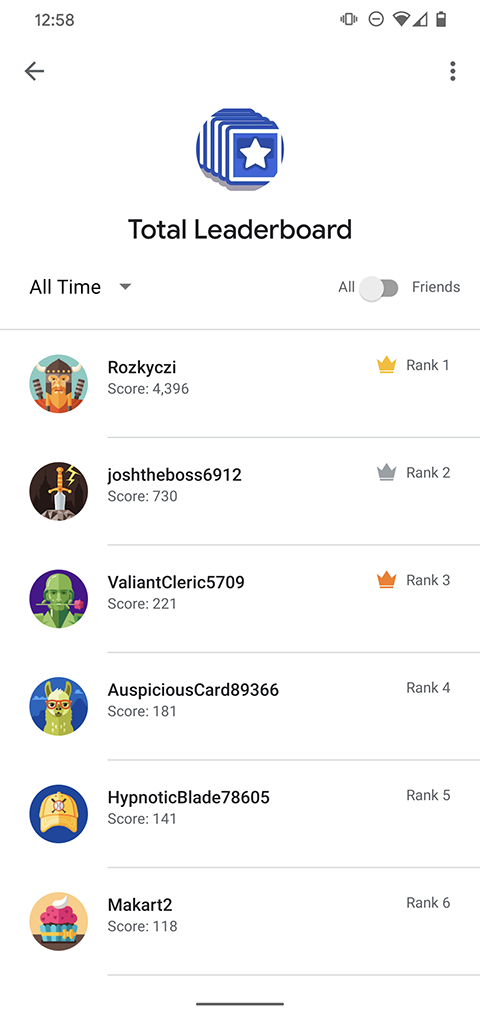Este guia mostra como usar as APIs de placares em um app Android
para criar placares visuais, registrar a pontuação de um jogador e comparar a pontuação
com a de sessões anteriores do jogo. As APIs podem ser encontradas
nos pacotes com.google.android.gms.games
e com.google.android.gms.games.leaderboards.
Antes de começar
Caso ainda não tenha feito isso, recomendamos consultar os conceitos de placares no jogo.
Antes de começar a programar usando as APIs de placares:
Siga as instruções do guia Configurar o SDK do Google Play Services para instalar e configurar seu app para usar os serviços relacionados a jogos do Google Play.
Defina os placares que você quer que o jogo mostre ou atualize seguindo as instruções no guia do Google Play Console.
Faça o download e confira os exemplos de código dos placares na página de exemplos do Android (link em inglês) no GitHub.
Conheça melhor as recomendações descritas na Lista de verificação de qualidade.
Acessar o cliente de placares
Para começar a usar a API de placares, o jogo precisa ter um objeto
LeaderboardsClient.
Para isso, chame o método PlayGames.getLeadeboardsClient()
e transmita a atividade.
Atualizar a pontuação dos jogadores
Quando a pontuação do jogador muda (por exemplo, quando ele termina uma partida), o
jogo pode atualizar o placar chamando
LeaderboardsClient.submitScore()
e transmitindo o ID do placar e o valor bruto da pontuação.
O snippet de código abaixo mostra como o app pode atualizar a pontuação do jogador:
PlayGames.getLeaderboardsClient(this)
.submitScore(getString(R.string.leaderboard_id), 1337);É recomendado definir o ID do placar no arquivo strings.xml para que
o jogo possa referenciar os placares pelos IDs de recurso. Ao fazer chamadas para
atualizar e carregar pontuações de jogadores, siga as
práticas recomendadas para evitar exceder sua cota de APIs.
Mostrar um placar
Para mostrar o placar, chame
LeaderboardsClient.getLeaderboardIntent() para receber um
Intent e
criar a interface do usuário padrão. Em seguida, o jogo pode mostrar a
UI chamando
startActivityForResult.
O snippet de código abaixo mostra como o app pode atualizar a pontuação do jogador. No
snippet de código, RC_LEADERBOARD_UI é um número inteiro arbitrário para o código da solicitação.
private static final int RC_LEADERBOARD_UI = 9004; private void showLeaderboard() { PlayGames.getLeaderboardsClient(this) .getLeaderboardIntent(getString(R.string.leaderboard_id)) .addOnSuccessListener(new OnSuccessListener<Intent>() { @Override public void onSuccess(Intent intent) { startActivityForResult(intent, RC_LEADERBOARD_UI); } }); }
Mesmo que nenhum resultado seja retornado, você precisa usar
startActivityForResult
para que a API possa receber a identidade do pacote de chamada. Confira abaixo um exemplo da
IU de placar padrão.


